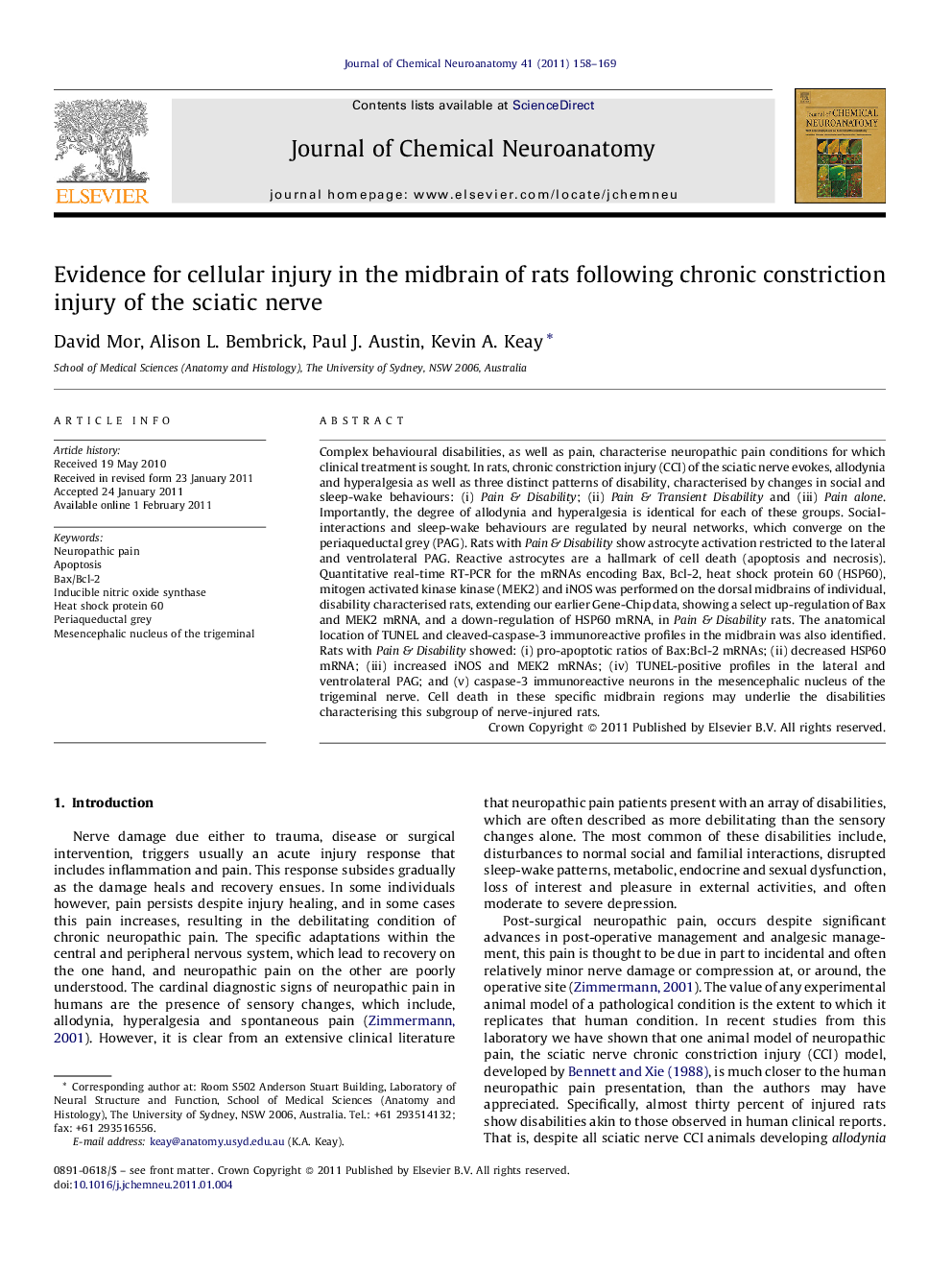| کد مقاله | کد نشریه | سال انتشار | مقاله انگلیسی | نسخه تمام متن |
|---|---|---|---|---|
| 1988976 | 1063552 | 2011 | 12 صفحه PDF | دانلود رایگان |

Complex behavioural disabilities, as well as pain, characterise neuropathic pain conditions for which clinical treatment is sought. In rats, chronic constriction injury (CCI) of the sciatic nerve evokes, allodynia and hyperalgesia as well as three distinct patterns of disability, characterised by changes in social and sleep-wake behaviours: (i) Pain & Disability; (ii) Pain & Transient Disability and (iii) Pain alone. Importantly, the degree of allodynia and hyperalgesia is identical for each of these groups. Social-interactions and sleep-wake behaviours are regulated by neural networks, which converge on the periaqueductal grey (PAG). Rats with Pain & Disability show astrocyte activation restricted to the lateral and ventrolateral PAG. Reactive astrocytes are a hallmark of cell death (apoptosis and necrosis). Quantitative real-time RT-PCR for the mRNAs encoding Bax, Bcl-2, heat shock protein 60 (HSP60), mitogen activated kinase kinase (MEK2) and iNOS was performed on the dorsal midbrains of individual, disability characterised rats, extending our earlier Gene-Chip data, showing a select up-regulation of Bax and MEK2 mRNA, and a down-regulation of HSP60 mRNA, in Pain & Disability rats. The anatomical location of TUNEL and cleaved-caspase-3 immunoreactive profiles in the midbrain was also identified. Rats with Pain & Disability showed: (i) pro-apoptotic ratios of Bax:Bcl-2 mRNAs; (ii) decreased HSP60 mRNA; (iii) increased iNOS and MEK2 mRNAs; (iv) TUNEL-positive profiles in the lateral and ventrolateral PAG; and (v) caspase-3 immunoreactive neurons in the mesencephalic nucleus of the trigeminal nerve. Cell death in these specific midbrain regions may underlie the disabilities characterising this subgroup of nerve-injured rats.
Research highlights
► Chronic constriction injury of sciatic nerve produces pain in all rats but altered social behaviour and sleep-wake disturbances in only a subpopulation.
► Chronic constriction injury of sciatic nerve is a closer model of clinical human neuropathic pain than previously appreciated.
► Rats with pain and disability after injury show the molecular and anatomical hall marks of cell death in discrete regions of the periaqueductal grey of the midbrain.
► These periaqueductal grey regions are pivotal for the expression of normal social and sleep-wake behaviours.
► Nerve injury triggered cell death in the periaqueductal grey may underlie some of the disabilities which characterise chronic neuropathic pain states.
Journal: Journal of Chemical Neuroanatomy - Volume 41, Issue 3, April 2011, Pages 158–169